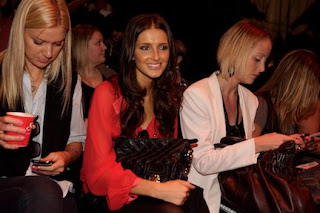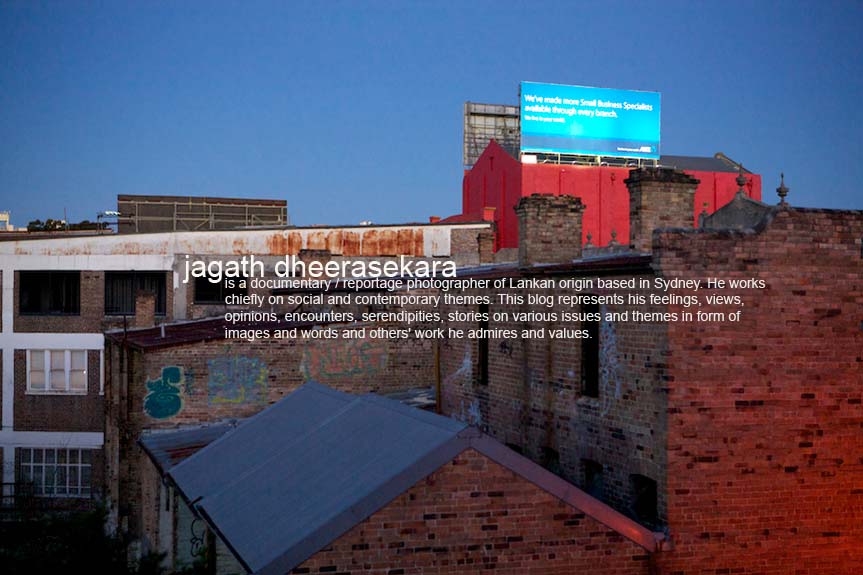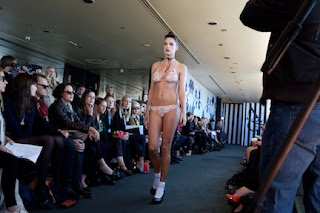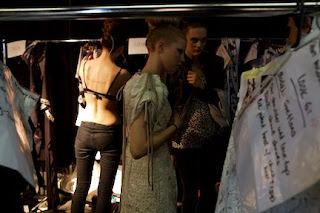

 I couldn't find anything which explains the cat walk better than the following article by Jess Cartner-Morley appeared in the Guardian. I thought it would be an value addition to my photographs of the fashion week.
I couldn't find anything which explains the cat walk better than the following article by Jess Cartner-Morley appeared in the Guardian. I thought it would be an value addition to my photographs of the fashion week.The Guardian,
Friday 13 March 2009
Eyes front
Forget about the clothes and the catwalk models. The big fashion shows are all about the front row. Jess Cartner-Morley explains why
Interactive: The fashionistas - who they are and where they are sitting
It is no exaggeration whatsoever to say that the front row, not the catwalk, is the raison d'etre of the modern fashion show. If the only thing to watch at a fashion show was the models, catwalks would have died out long ago.
The front row is what keeps the catwalk alive. In 2009, the bumbling way in which the fashion industry operates - with thousands of buyers, journalists, stylists and PR people spending a month, twice a year, traipsing around four cities, perching on endless identical rows of chairs to watch the same group of young women walk past them, wearing different clothes and different makeup each time - well, it is either sweetly quaint or plain ridiculous, depending on who you ask. It is a vintage carousel, in the age of the videogame; a steamer passage in the era of Skype. The catwalk is a museum piece, a tourist attraction, a throwback. If the purpose were simply to display clothes, the video and photographs could go straight on to the internet - where they are already freely available within hours of the event.
But the difference between a webpage of fashion stills and a catwalk show is the difference between hearing a song on the car radio and hearing it from the floor of the Brixton Academy; between watching Match of the Day and being on the terraces. In this case, however, the real action doesn't happen on the stage: rather, the beautiful but usually rather solemn and wooden models form the backdrop to the more interesting business of who is in the front row, wearing what, talking to whom. The front row is what makes catwalk shows matter as a live event.
The genius of the catwalk seating system, with its strict hierarchy, is that the choreography is so compellingly brutal. The cliche of a catfight is wide of the mark, for in the battle of the egos this is bareknuckle stuff. The prettiest, the richest, the luckiest and the most popular get to sit at the front, while everyone else sits behind staring at the back of their heads, pretending not to care, smarting at the injustice of it all, and plotting their revenge. Remember when the two sportiest kids in your class got to pick out their football or netball teams one by one, plucking out the talents from the weedy stragglers? At catwalk shows, the subtler power-plays of adult life in the open-plan office are dispensed with, and life regresses back to the playground.
For a fashion designer, the right front row means phenomenal publicity. Few people within sight of a newspaper this week can have failed to notice that Chanel had a catwalk show, because of the stir created by Kate Moss's presence. If rather fewer will have registered that Lagerfeld's vision for autumn is a dark, slim, Beau Brummel-influenced silhouette with touches of pale jade, no matter: the Chanel brand has been given a fresh coat of glamour.
In the front row, as at a dinner party, guest list and placement is a fine art. One celebrity is not enough, for interaction is all. The first ingredient on a perfect front-row smorgasbord is a classic A-list beauty who can be relied upon to look amazing in your clothes and to be flawlessly turned out: see Claudia Schiffer at Chanel, Thandie Newton at Stella McCartney. Then you need someone "hot" to give that so-next-season feel: Freida Pinto, fresh from Oscar triumph, or Beth Ditto, pop star and nude cover star of new magazine Love, are the go-to girls right now. You also want someone who will go out partying in high-profile hotel bars later in the evening, still looking glamorous in your clothes but ideally tipsy enough to get the tabloids in a frenzy. (Moss is first choice; Lily Allen runs a close second; Kate Hudson fulfilled this role at Dolce, spending the night before the show drinking in the Principe hotel bar with David Beckham.) A fashion "grown-up" - Mario Testino, or Gucci group boss François-Henri Pinault - lends gravitas. To satisfy the audience appetite for celeb-on-celeb interaction, guests are only allowed to have their partner sit with them in the front row if that partner is also famous. The key faces are placed in threes, as a triple-portrait tends to work well in the papers.
Chanel insists that it never pays celebrities to appear, but it is a badly kept secret that many fashion labels do pay celebrities to sit in their front row. A couple of years ago, at the height of the financial boom, five-figure sums were regularly changing hands, and even the perks (suites at the Ritz, frocks, first-class travel) are not to be sniffed at. But while these appearance fees are on the wane - who says the recession doesn't affect everyone, after all? - there are still deals to be done between designers and celebrities.
These days, everyone has a profile to build and a brand to promote. For some, it is as simple as getting their name and face out there. It is rumoured that Pinto is in talks with Estée Lauder about starring in an advertising campaign, in which case the added glamour of her front-row appearances could help her land the job. Forging a relationship with a powerful designer can also help an actor or musician cherry-pick the best magazine coverage. It works like this: a fashion label puts pressure on a magazine to feature one of its dresses on the cover, as a payback for having bought expensive advertising space. As a carrot, the label offers to ask a celebrity whom the magazine is keen to shoot to model the dress. The celebrity then gets to do the label a favour - which might be repaid down the line with an advertising campaign, or certainly with a valuable wardrobe - by choosing that magazine. The front-row appearance is just one move in a chess game played largely behind closed doors.
And the games don't stop once the invitation is accepted. Fashion-show etiquette makes the court of Henry VIII look like a backyard barbecue. The celebrities on the front row will never take their seats until well after the surrounding hoi polloi are waiting: being part of the show, rather than the audience, the front row waits until the audience is watching. Because the designer will always dress his favourite guests, watching what the key celebrities are wearing can often give the first clues as to the collection. (Eva Herzigova's leg-of-mutton sleeves at Dolce looked decidedly odd until the first clothes came down the runway, where they looked very Next Season Dolce.)
Appearing from backstage lends extra cachet: the unspoken assumption being that you have been chatting to the designer, making plans to join him on the boat in July and being plied with free bags. Once the full front row is in attendance, all guests must instantly assess who the Alpha presence is and cement their status by allying themselves with them (see Kanye West and Pink jumping up to embrace Paul McCartney at Stella's show, and Lily Allen linking arms with Kate Moss after Chanel).
It is perfectly acceptable for a celebrity to talk to a neighbour all through the show, although animated pointing and gasping in delight at the clothes on the catwalk scores extra brownie points.
Our obsession with the front row may seem ludicrous, but it is perfectly logical. The fashion up on the catwalk is all icy, clinical aesthetic perfection. The models wearing it bear almost no resemblance to the average woman so, beside them, Lily Allen and Catherine Deneuve, beautiful as they are, look marvellously normal. Fashion is not about being dressed by someone else and walking up and down a wooden stage; it is about wearing something that hooks you into the world, makes you relevant. Clothes turn you from the watcher to the watched. The catwalk show is so last year; long live the front row.



.jpg)







































.jpg)






.jpg)